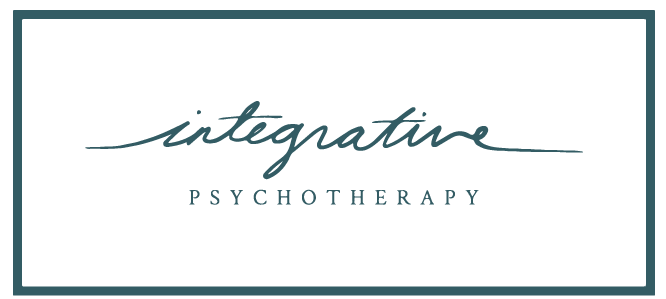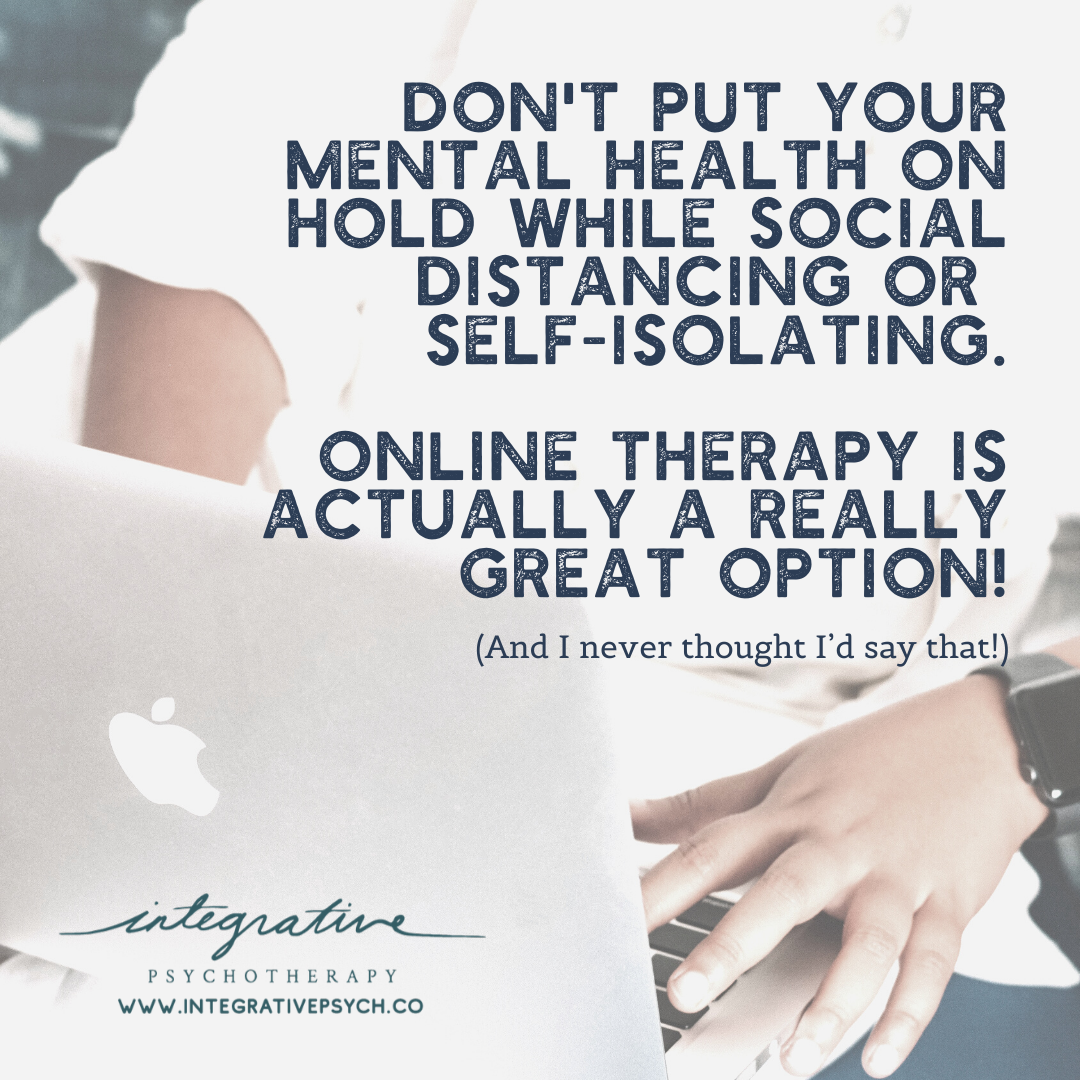Online Counseling- A guide for the Skeptical.
Online Counseling in Long Island, New York.
“Put down the weight of your aloneness and ease into the conversation.” ― David Whyte
I don’t need to elaborate on how much the world has changed over the last few weeks... and therapy is just one of the many examples of the extent of it.
Because achieving complete health is the ultimate goal of your therapist, you may find that the new COVID-19 reality is standing in the way of attending your cozy therapist’s office. You may be missing your regular visits; coffee in hand, unloading and processing your stress of the week, connecting with your therapist in a deeply personal way and recalibrating your mental state.
I never thought I’d say this, but virtual tele mental health, zoom calls, VSEE, DoxyMe, Facetime and for some, calls, emails and/ or texting can really offer an incredible opportunity for connection even in the comfort of your own home.
For some this transition is idyllic… no need to get dressed to “meet” for therapy, no need to travel and no worries about sitting in traffic. But for others there are also some legitimate worries about this significant adjustment.
If this is you, you may be wondering “Will this ever feel ok”? “Will I still feel connected to my therapist if we meet virtually”? Or “How long will this last? Maybe I can push off therapy until this whole thing blows over.”
These are all so valid and normal responses to a change like this.
I’d like to say that virtual therapy will be the same as in-person and that things won’t be so different, but that would be untruthful. It will certainly be different. But, different is sometimes really good. There is a tremendous amount of research supporting the effectiveness of virtual therapy. I have even heard of therapists saying that they find it even more effective than in-person sessions. But each therapist will have a different experience.
The reality is, that it is the perfect opportunity for us to develop our resilience and adaptive skills. Both therapists and clients. So what will the differences be like?
Far apart but still strong and steady
Your connection with your therapist will still be strong. He/She knows you and is still thinking of you- especially at times like these.
Of course, your therapist won’t be able to reach out to you, move closer to you when you’re feeling especially emotional… but body language and eye contact can be incredibly powerful. Your connection will still feel strong.
Your body and mind will still feel the connection; that you’re still communicating with someone who is your anchor, who knows you, understands you and is steadily holding you, helping you rediscover who you are, and continuing to support you, gently pushing you towards your goals.
Yes, even when the world has changed, staying consistent with your mental health and life goals is one of the most stabilizing things you can do for yourself.
Staying Anchored Connection & Wisdom that Comes With Consistency
Especially in turbulent times, It is so important to stay as focused and consistent in as many areas of your life as you can muster.
Getting support for this transitional time can be very anchoring, helping to strengthen your mind and body, and to gain tools to help process and alleviate symptoms of anxiety, worry, relationship issues and parenting dynamics. In uncertain times, the best thing we can do is stay connected to some sense of familiarity and support. If you have not yet engaged in therapy beforehand and feel like you are on the fence about it, just know that now is a great time to start. The wisdom and consistency a therapist can bring can help you stay grounded during the turbulence.
I’ve personally been staying in touch with my support network, getting virtual consultation from experts and I am staying in touch with peer groups for professional input.
I am not a major phone person, but I find the virtual world to be a lifesaver with all that is going on.
There is something unique, and almost emotionally intimate when we are all up close connecting to each other from each of our own homes. We are surprisingly able to be more fully focused on each other and on what we are all saying.
This new form of connection has more of a casual feeling than what we are used to, but it actually has its perks! We are better able to show up in all of our human imperfections. Who we truly are shines through at times like these. The way of the past was more formal and professional. This new reality invites a new form of professionalism that is grounded in humanity and joint experiences.
When your therapist office is the only safe place you have
It breaks my heart to point out that there are many people out there who rely on their visits to the therapist’s office as it is the only place they feel safe, secure and at home. If this is you, I want you to know that I am here for you. I see you. I get it. And I feel the pain you must be feeling.
There is something settling, comforting and reassuring about being in someone else’s space, engaging with their energy and being able to let your worries, fears and emotional burdens rest on their shoulders.
I hope and pray that this will be over soon. We don’t know when, but we do know it is temporary.
Until in-person therapy becomes an option once again, I recommend creating a contained space within your home that is specifically set up for your sessions or even your self-care. This space can even be created in your mind when your eyes are closed if space is limited. You can describe
Maximizing Your Time in Virtual Sessions
Make Your Own Therapy Nook
Those of us working from home had to create a space that is ideal for getting work done. It’s not always easy, especially if you are living in close quarters, but I recommend you also find a spot in your home that would be most ideal for your therapy sessions. Find a comfy spot where you focus and can have the session with as little interruption as possible. If finding privacy is difficult, the car or porch can be a great private option for you sessions! Many people find it very important to have a consistent place.
Shifting Modes
When shifting from work mode, getting off a zoom call or wrapping up homework you’ve been focusing on with your kids or tidying up the house, make sure to set 15 min between tasks to shift modes. It’s a good practice before therapy as well. Leave yourself that transition time to get settled in your space so you don’t start the session frazzled. Getting into the zone will help get the session focused from the beginning. As you shift make sure to get into something comfy so your mind and body get into a relaxed zone.
Manage your comfort level
Many platforms have video on them, and you may want to keep your video on so you can see yourself, or you may want to close that down so you can focus on the session and not be distracted by seeing yourself. Those are totally adjustable settings. Just play around with the platform before your session.
Allow your mind to rest… and your arm!
When we have a short convo via video or phone, it's ok to hold the phone, but when it comes to a lengthy therapy conversation, I invite you to find a spot to rest your phone or computer so you can calm down with your mind, without getting an arm-ache!
It’s an adjustment
Know that shifting to virtual will feel new for you {or if you're starting therapy and doing it virtual, know that this is one way to work and it is somewhat different than in person}. It’s ok to need to see how things go and let yourself “try on” the new way of working. You’re being creative to care for your mental health and that is commendable.
When privacy is an issue
If you're in lockdown mode and there is only so much privacy you can access {because you are in close quarters with your loved one, little ones, roommates, parents or whoever else is around) tell your therapist, and perhaps you can arrange to send him/her emails or voice notes via a HIPPA compliant platform so he or she can hear or read the more private topics in advance, even though you won’t be able to speak about the issues out loud during your call. This way your therapist can address these issues with you (make sure you have headphones on) and you can remain discreet on your end of the call.
Tuck It Away
Before you dive back into your day, when you are done with the therapy session, take a few moments to digest and integrate the work you’ve done. It may be a shift of work, a focus on something new or a piece of information that is settled in on your mind. Let it settle and tuck it in
Virtual Therapy Can Feel Different, But It Can Also Be a Gift
Yes, virtual therapy is a shift... and is different. It’s ok for it to be and feel different. After meeting online once or twice, check in with how you're doing and how you’re acclimating to this. If it’s not your cup of tea, know that it is most likely short term, and you will be back in the office as soon as possible! I encourage my clients to let me know how I can make the experience more meaningful and effective for them.
Make sure to be open and honest with your therapist about how things are going.
You are paying them to support you, and you don’t have to worry that you will hurt their feelings if you make suggestions that could help.
All of my colleagues are working hard to make sure that this new phase is full of growth and learning.
I’m here from my home office in Long Island, New York wishing you much strength and supporting you in taking steps to care for your mind and body. If it’s self care routines, reaching out to loved ones, or starting or keeping up with therapy, I am here cheering you on.
Sending much warmth and caring wishes your way.
-Esther







